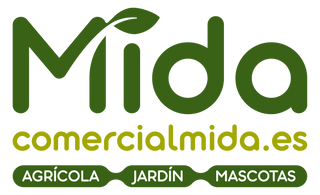
Insects and insecticides:a brief approach to the global phenomenon
Insects and insecticides:a brief approach to the global phenomenon
Insects are the most abundant animals on planet earth, not only in individuals but in species. Thanks to their ability to adapt, they have multiplied without pause.
They are small in size, on average they measure from 6 to 10 mm and their weight varies between 25 and 50 mg. Their size allows them to inhabit certain spaces where competition for nutrients is almost nil, this being an advantage. They are able to feed on the waste of other animals and shelter in places where they cannot be pursued. Their reproductive capacity is one of the characteristics that has allowed them to successfully perpetuate the species.
The body of insects lacks bones, but it is covered by an exoskeleton resistant to various chemical substances. The function of the exoskeleton is to support and protect muscles and organs. They have a segmented body (separated by constrictions), which gives them great freedom of movement. These segments are head, thorax and abdomen.

Source: http://web.bioucm.es/cont/vespa/index.phpd=morfologia.phpp
The head has the function of locating food and dangers. The abdomen has locomotor function. The reproductive organs are housed in the abdomen. It is noteworthy that insects are the only invertebrates endowed with wings. The sensory organs of insects are made up of compound eyes and antennae.
Their diet is based on the consumption of any type of organic substance. The mouthparts have a feeding function and together they form the oral apparatus. There are different types of oral apparatus:
|
MASTICATOR Cut and grind food. It is the least specialized |
PICADOR-SUCTOR It pierces the tissues and sucks out the internal fluids. It is typical of bedbugs, aphids and mealybugs |
|
SUCTOR Vacuums exposed liquids such as nectar and juices from damaged fruits. Butterflies and moths have it |
SUCKER Well developed lip. Mouthparts of flies. own bees |
|
sucking chewer Intermediate system between the chewing and sucking apparatus |
LICKING CUTTER intermediate system. Horseflies and some flies possess it |
Except for some cases, in insects the sexes are separated (sexual dimorphism). Although sometimes it is difficult to differentiate them, in many cases there are well-marked sexual variations, for example in color, size, presence of wings or horns, among others. For the most part, reproduction is sexual and they are oviparous; copulation is followed by the laying of eggs and their subsequent hatching.
Within the insecta class we find pest insects and beneficial insects. The former negatively affect agricultural production, causing damage to crops and therefore economic losses. Insecticides are used to prevent or reduce damage. They are agents of chemical or biological origin that destroy the insect or limit some of its functions, preventing it from causing damage. In the article we will focus on chemical control. These products are differentiated according to their origin and mode of action.
- Compounds of carbon, hydrogen and chlorine. Few insecticides of this type are currently in force.
- They contain phosphorus. They are toxic to vertebrates and not very persistent. They were introduced as substitutes for organochlorines. They inhibit some enzymes that intervene in the activity of the nervous system causing paralysis.
- They are derived from carbamic acid and have a similar action to that of organophosphates, although with one difference: their effect is reversible.
- Of synthetic origin, they are effective against most insects and are used at low doses. They have had great evolution over the years. They have a very good residual effect. They affect the central and peripheral nervous system of the insect.
- They are similar to natural nicotine. They act on the central nervous system.
- Benzoylureas. It works as an insect growth regulator. It acts in the larval phase of most insects by blocking the synthesis of chitin, an element that gives hardness to their exoskeleton.
Theinsecticides They arrive at their site of action in different ways:
- Contact: when the product comes into contact with the insect
- Ingestion: when they feed on items that contain the product
- Inhalation
Advice of Commercial Mida
Insecticides are not the only control measure. Always try to combine it with cultural and biological control measures, thus reducing the environmental impact of agrochemicals. A correct identification of the pest present, the proper choice of the product to be used, respecting the dose to be applied and knowing the toxicity of the product are measures to be taken into account in order to be more respectful of the environment.
